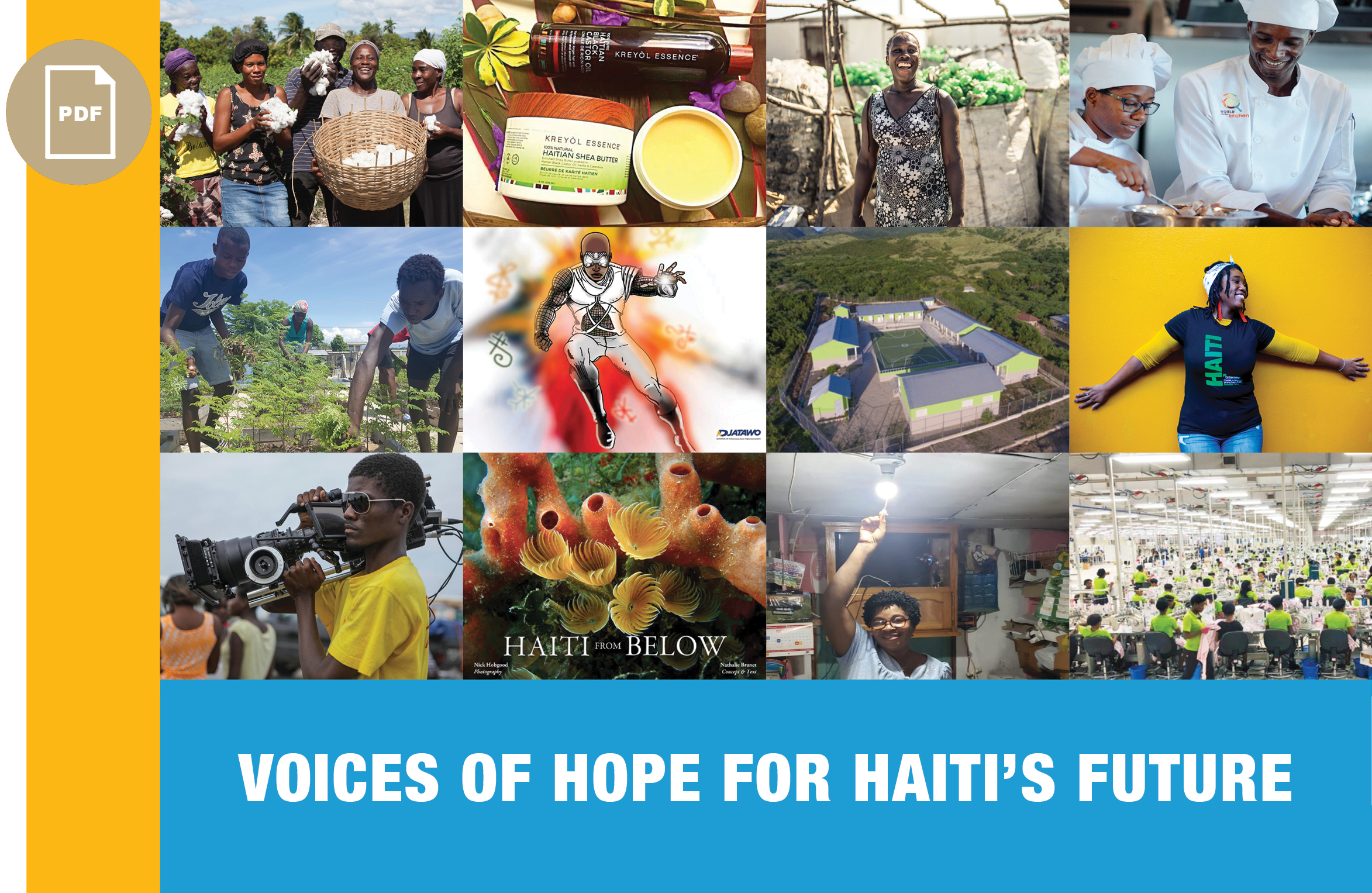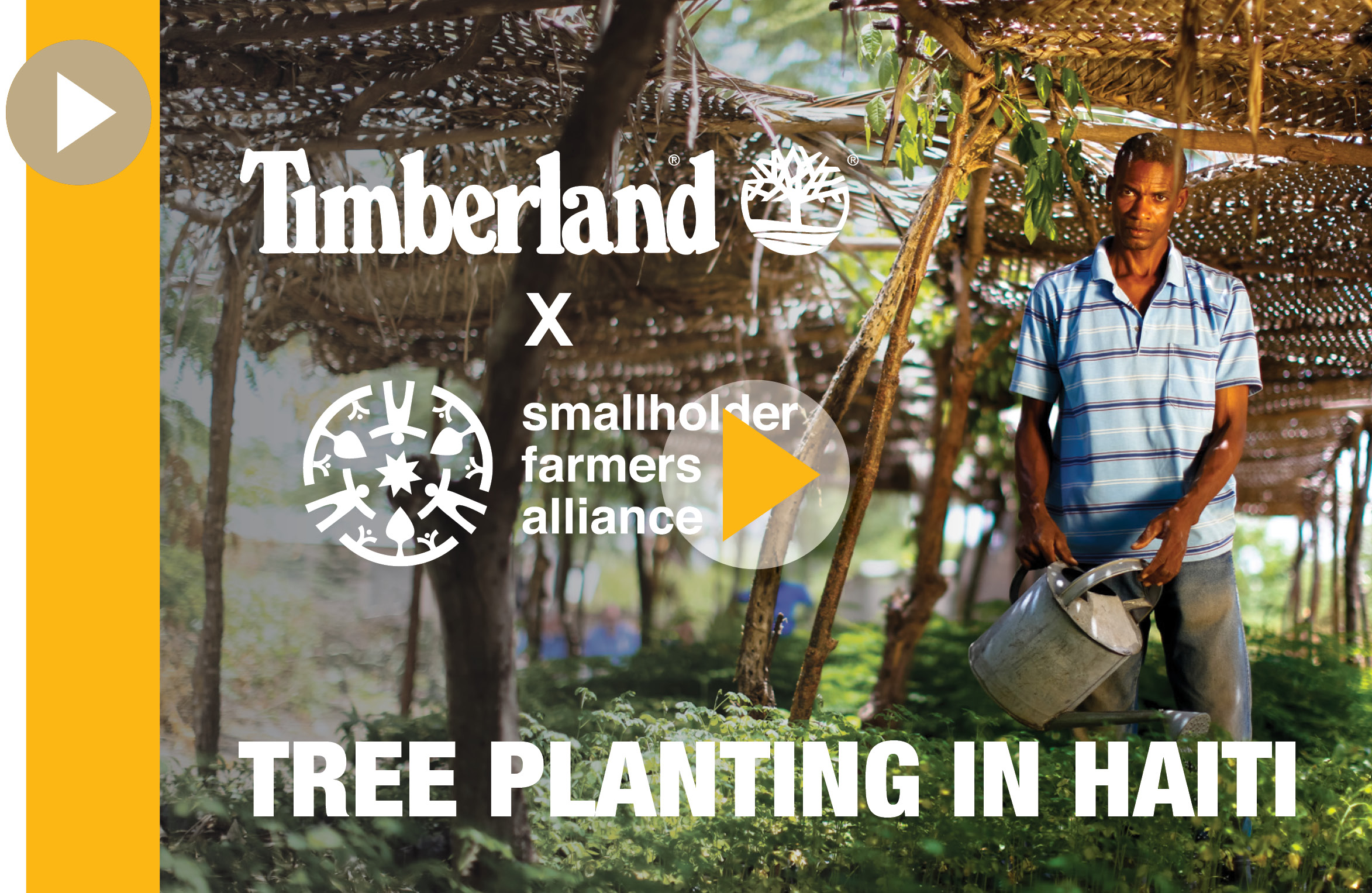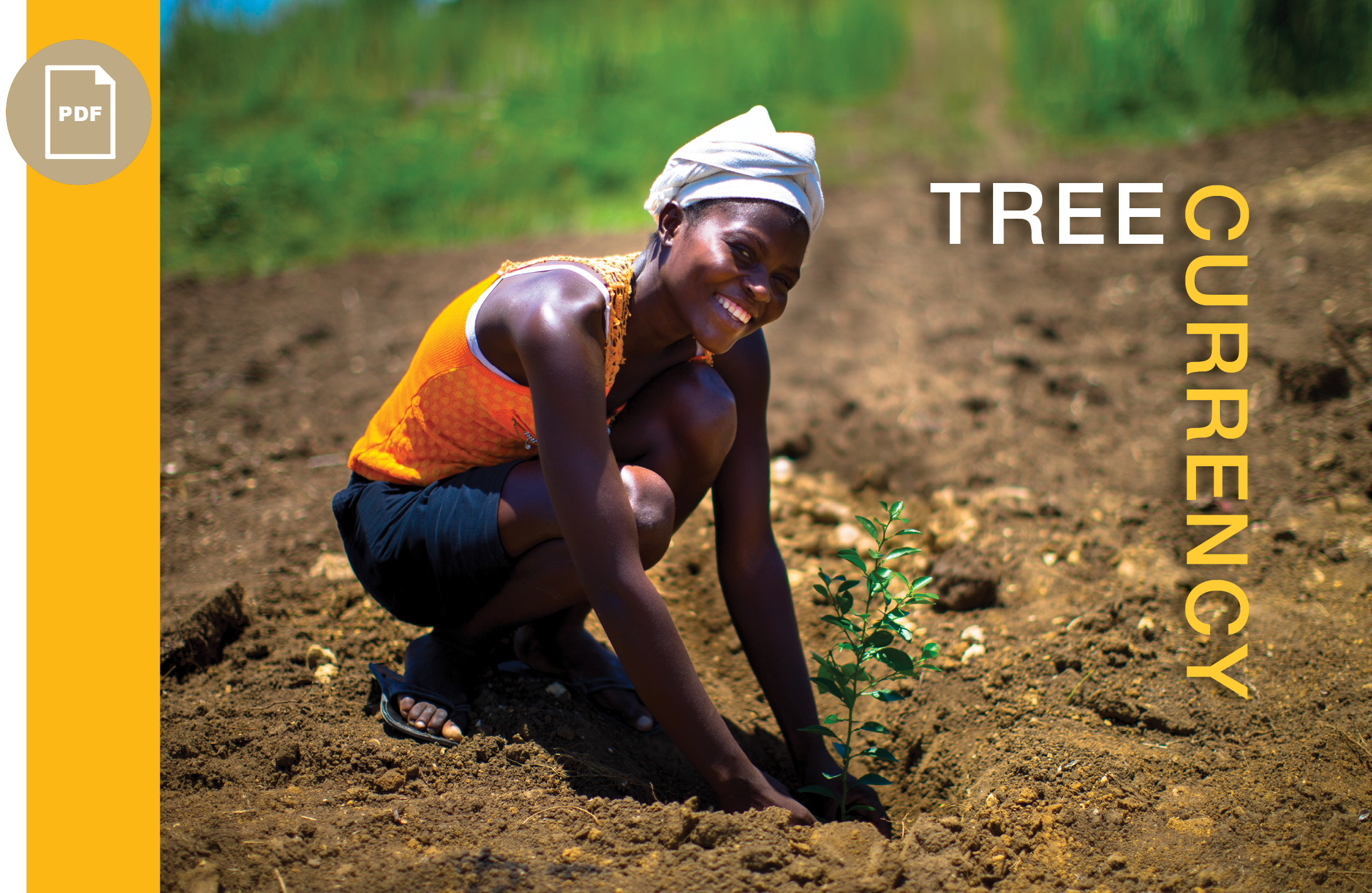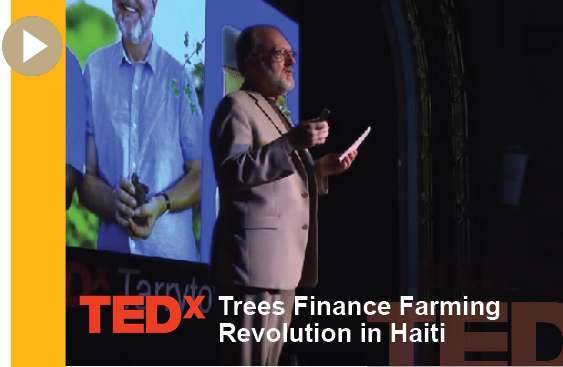 Tuesday, February 12, 2013 |
Tuesday, February 12, 2013 |  Hugh Locke
Hugh Locke Exit Strategy Aid Shows Promise in Haiti
Visit NBCNews.com for breaking news, world news, and news about the economy
Three years ago a development expert (me), an agronomist (Timote Georges) and a shoe and apparel company (Timberland) set out to plant trees in Haiti. Despite a background in forestry, I had been working for five years in Haiti without putting that experience to use. Timote had been working with small-scale farmers planting trees, but was disappointed with the lack of tangible results. The Timberland Company had made a commitment to plant five million trees before 2015 and was looking for a partner for this initiative. The result of our collaboration is an ongoing experiment that is showing early signs of significant potential for Haiti and the rest of the developing world. I call it “exit strategy aid.”
Starting With Farmers
Haiti was once covered in tropical forests, but now has less than two percent tree cover. There are many parts of the country that are semi-desert, with only scrub grass and cactus. And in a mountainous country with no trees on its slopes, every major rain storm causes massive destruction in both urban and rural areas.
There are close to 10 million people in Haiti, six million of whom live in the countryside and rely on agriculture for their livelihoods. The importance of involving farmers in the planting and maintenance of trees cannot be overstated. But as Timote discovered, getting them on board is challenging. The farmers he had been working with were reluctant to look after trees without a financial incentive.
The average Haitian farmer has around 1.5 hectares (close to 4 acres), and their agricultural techniques have changed little in the last hundred years. We discovered what they really wanted was the agricultural training necessary to improve their crop yields. If we could do that, they were willing to plant and protect trees.
This is how we came up with the basic model that we have been implementing in a pilot program for the past three years, supported by Timberland. Through the non-profit organization I helped create, called the Smallholder Farmers Alliance (SFA), we provide an agricultural service to farmers with the training they need to improve their yields, in exchange for their help in planting and looking after trees.
Working with an initial group of 2,000 small-scale farmers near the northern city of Gonaives, this agricultural service has expanded to include providing high yield seed, training in crop management, a micro-loan program, in-field technical support and supplying the good quality tools needed to produce higher yields of sorghum, beans, corn and other food items (all done with heirloom, non-hybrid seeds and no chemical fertilizers). Those yields have gone up as much as 50 percent, depending on the crop.
In exchange, the farmers operate eight nurseries, which together grow one million trees a year. When the trees are roughly six months old, the farmers transplant the seedlings onto their own and community land. Because the agricultural service raises their food crop yields, and consequently their income, planting trees means earning more money. In addition to the environmental benefit, farmers have also begun to benefit from fruit, timber, fodder and fuel as the seedlings grow and mature.
So far, what I have described is a fairly standard form of foreign aid. It would technically be classified as agroforestry because it involves growing trees and food crops on the same land. The particular combination that Timote and I came up is innovative because we figured out a financial incentive to get trees planted and protected by the farmers. And the scale of the operation is impressive: to date we have planted 2.2 million trees and, now that we are at full capacity with the pilot program, we are continuing at the rate of one million more each year.
However, the fact remains that if this is all we did, the program would operate only as long as the external funding kept coming. The day the funding stopped would be the day the program stopped.
Along Came Timberland
You know that feeling when you have worked hard to come up with a great idea that you are really excited about, and then just one question deflates the whole thing? That was what happened just over three years ago when I first presented our concept—planting trees in exchange for an agricultural service—to Jeff Swartz, then CEO of Timberland, and his colleague Margaret Morey-Reuner, Senior Manager for Values Marketing. I had expected we would plant trees as long as sponsorship funding from Timberland kept flowing. Instead, they wanted to know how the program would pay for itself when the funding stopped.
This is not how foreign aid currently operates. You are supposed to give out money for short term projects with measurable results, even if a longer program can be shown to build local capacity; giving out fish is preferable to teaching people how to fish. At the same time, there is a rule in foreign aid that those with the money, whether governments or non-profit organizations, can deliver any given service more effectively and efficiently than the local people being helped. Both of these current foreign aid assumptions are wrong, and both approaches tend to create a dependency on handouts. This is particularly true in Haiti.
Imagine for a moment that the current rules of foreign aid were applied to the Hurricane Sandy recovery efforts in New York, New Jersey and Connecticut. In this “foreign aid scenario,” overseas governments would step forward to provide the $50 billion in aid instead of the U.S. Congress. Those foreign governments would each decide how their money was to be spent, and the U.S. and state governments would not be consulted. Each government would bring in its own contractors and its own charitable organizations to implement the recovery efforts, with almost no money going to local groups or contractors. And when the funding stopped, all activities on the ground would stop and the resulting projects would collapse. With few exceptions, this is how foreign aid is given out by wealthy countries to poor countries the world over. Is it any wonder that it is not having the intended impact?
Timberland’s question forced us to re-think the entire operation. We had to work back from the end of the program (which we decided would be three years) to determine how we could be certain it would continue without us and our funding. The result of these deliberations was a program that, after three years of investment and training, would continue as a farmer-managed and self-financed operation. By working back from our exit date, every action we took from day one had to prepare the farmers to oversee and implement all aspects of the operation and generate enough profits to pay for it. The resulting innovation of “exit strategy aid,” which sets a strict time limit on external training and funding, has implications for the rest of the developing world.
The 2,000 farmers in SFA’s pilot program have been trained to operate eight tree nurseries that now generate one million trees a year. They have also been trained to run their own agricultural service, which includes everything from finding good quality sources of high-yield crop seeds, running a microfinance service, learning how to detect early signs of insect or fungal infestation, to making non-toxic herbicides and pesticides using neem leaf extracts—a native tree species they are also helping plant. Classic agroforestry—growing trees and food crops on the same land—but farmer-managed, with SFA in the role of consultant instead of manager.
With the farmers performing every task related to running the operation, the next issue was the structure. We helped to turn the individual farmers into a for-profit agroforestry cooperative. Each farmer sells his or her own food crops directly and pockets the income (including the increase from higher yields), but the cooperative runs both the tree planting and agricultural service elements. The cooperative earns income by selling up to one third of the tree seedlings the farmers grow each year, with several other income streams coming on line soon.
The First Big Test
The pilot program near Gonaives began operation in February, 2010, and the farmer members are now in the final stages of incorporating as a for-profit cooperative called “Alyans Ti Plantè-Gonaïves” in Creole. External funding stopped at the end of last month.
The first real test of the model came when farmers throughout Haiti lost between 40 and 70 percent of their crops as a result of hurricanes Isaac and Sandy. The cooperative had already saved enough income from tree sales to be able to purchase the extra seed needed by members to replant their storm-damaged fields. They were also able to purchase close to a metric ton of rice for farm members. But rather than handing out this much-needed rice for free, women members who had recently repaid micro-loans were able to get new loans to purchase the subsidized rice and sell it to other cooperative members for half the going market rate.
The cooperative took care of its own members without turning to any government or donor sources for assistance.
The Charcoal Conundrum
Haiti meets around 75 percent of its energy needs by burning charcoal and wood, with no corresponding national program of reforestation or the development of alternative energy sources. This dependence on trees for charcoal as a source of energy applies not only to individual cooking needs, but also for most commercial bakeries, dry cleaners and distilleries.
Our program focuses on tree planting—including farmer training in how to harvest trees sustainably—but reforestation alone is not the solution to the problem. For example, Haiti’s total use of charcoal could be cut in half if bakeries, dry cleaners and distilleries were given government assistance to convert to propane. That total could be further reduced through the systematic introduction of fuel efficient stoves throughout the country. At present there are a dozen or more programs experimenting with various fuel efficient stoves, including a promising version using locally-produced ethanol—but no one is coordinating this effort and preparing to scale it up.
Given that it currently takes around 30 million trees a year to power the country, the scale of reforestation needed to result in a net gain in trees makes this a daunting undertaking that will only succeed if balanced by a national plan to reduce charcoal consumption.
What Next?
The Smallholder Farmers Alliance, which is a non-profit, non-governmental organization (NGO) based in Haiti, continues with Timberland as our main partner. They have recently been joined by the Clinton Foundation, which has provided both funding and has introduced us to corporations working in Haiti with whom we are currently negotiating to become clients of our farmers.
We are planning to launch the next cooperative by mid-year when we begin working with a new group of 2,000 smallholder farmers in the Central Plateau region of Haiti. Expanding our sponsor base even further will allow us to establish what we hope will be a network of cooperatives across the country, each becoming independent after three years.
The government of President Michel Martelly has declared 2013 the “year of the environment” in Haiti and is calling for large scale tree planting. They have increased spending on agriculture and taken the first steps towards implementing a coordinated national agricultural policy. And they have had more direct say in how foreign aid is spent than any government in several decades. SFA’s goal is to build on these positive steps by continuing to plant trees and improve agriculture in Haiti, one farmer at a time.
Hugh Locke is Co-founder and President of the Smallholder Farmers Alliance and author of The Haiti Experiment.












Reader Comments